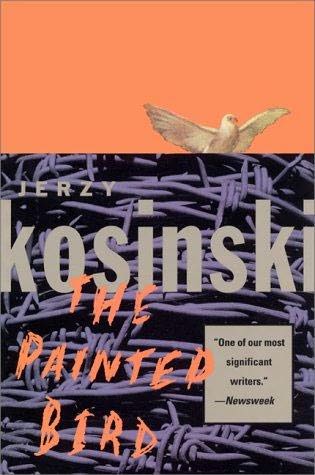 When a sufficient number of birds gathered above our heads, Lekh would give me a sign to release the prisoner. It would soar, happy and free, a spot of rainbow against the backdrop of clouds, and then plunge into the waiting brown flock. For an instant the birds were confounded. The painted bird circled from one end of the flock to the other, vainly trying to convince its kin that it was one of them. But, dazzled by its brilliant colors, they flew around it unconvinced. The painted bird would be forced farther and farther away as it zealously tried to enter the ranks of the flock. We s aw soon afterwards how one bird after another would peel off in a fierce attack. Shortly the many-hued shape lost its aplce in the sky and dropped to the ground. When we finally found the painted bird it was usually dead.
When a sufficient number of birds gathered above our heads, Lekh would give me a sign to release the prisoner. It would soar, happy and free, a spot of rainbow against the backdrop of clouds, and then plunge into the waiting brown flock. For an instant the birds were confounded. The painted bird circled from one end of the flock to the other, vainly trying to convince its kin that it was one of them. But, dazzled by its brilliant colors, they flew around it unconvinced. The painted bird would be forced farther and farther away as it zealously tried to enter the ranks of the flock. We s aw soon afterwards how one bird after another would peel off in a fierce attack. Shortly the many-hued shape lost its aplce in the sky and dropped to the ground. When we finally found the painted bird it was usually dead.Here is a rare book: a book about the Holocaust that does not take place in a concentration camp or on the field of battle, and in fact contains very few German characters. The Painted Bird is a parable, rather, of human cruelty, mean to contextualize what we know about the practices of the Nazi regime.
There are two ways to read it, I think: One is a wholly negative view, which states that the sadistic peasants who people the Polish countryside are the foundations of a European culture that allows Nazism to happen. The narrator, a young and unnamed boy has been abandoned by his parents, not out of malice but, we infer, in order to save him from the Nazis who have marked his parents as agitators. Somehow, the boy has ended up in the care of a superstitious peasant woman who regards his dark complexion and eyes as the harbingers of a great curse, and the cruelty that follows the boy around seem to validate this view. The old woman dies early in the book, and the boy wanders from one peasant home to another, witnessing a Bosch-like panorama of evil: savage beatings, men devoured in rat-filled bunkers, Russian mercenaries who castrate husbands and rape their wives, a peasant man who watches as his son and daughter couple with goats. In one protracted stay he is daily made to hang from a pair of hooks for hours on end while a ravenous dog nips at his feet below.
For a moment he stays with a bird-catcher who has a nasty habit of painted a captured bird bright colors and then releasing it to its flock. Unrecognized, the flock always tears the painted bird to pieces--a not-so-subtle metaphor for the severity and ubiquity of bigotry.
The other way to read it is more charitable: Europe, under the control of the Nazis, has become a cruel place. The fish, as they say, rots from the head. But I think Kosinski, who is Polish, includes few German characters for a reason. Instead of pointing his finger at the Third Reich, he turns his criticism on the primitive culture that lets such evil arise. Cruelty is not the domain of Germany here, and maybe not even Europe--perhaps it is a human trait.
Brooke asked me if I was enjoying this book; I told her that I do not think it means to be enjoyed. It gave me a lot to think about, and it made a strong impression on me, but it won't show up on my list of favorite books any time soon and I doubt that there are many people who would truly say they liked it. It was a chore.
Note: In reading about the book, I found some of the controversies surrounding it interesting: For one, Kosinski seems to have maintained privately for some time that it was autobiographical, but his foreword claims that it isn't and was never meant to be. Another, stranger, controversy is that some have claimed that Kosinski didn't write it; and barely knew English at the time. I really wouldn't know, but I think that that would make him a bit like the bird who paints himself.

1 comment:
Post a Comment